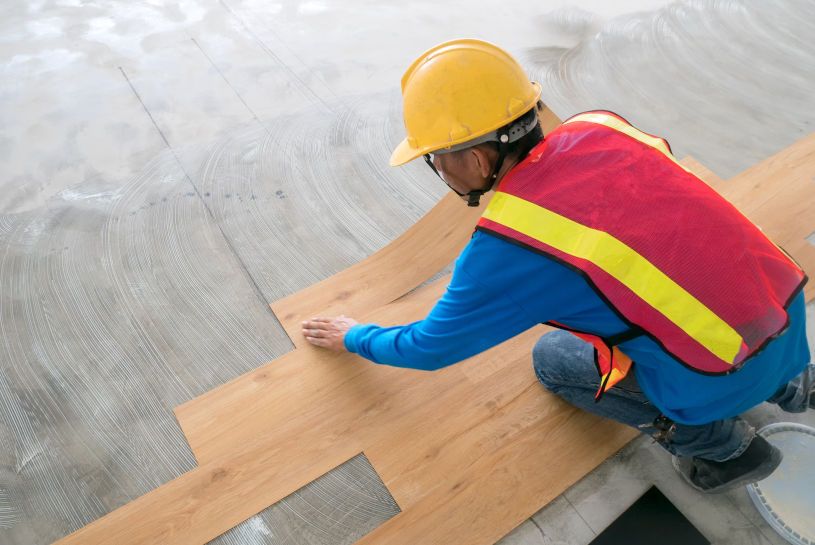
When preparing your subfloor for luxury vinyl plank (LVP) flooring, it is important to ensure that the surface is level, clean, and free of any debris or obstacles.
Here are some steps you can take to prepare your subfloor for LVP, if your subfloor is concrete:
1. Remove any existing flooring: This includes carpeting, tile, or hardwood. Be sure toremove any nails, staples, or adhesive residue left behind.
2. Inspect the subfloor: Look for any cracks, holes, or uneven areas that need to be repaired. If the subfloor is made of concrete, check for moisture issues by using a
moisture meter.
3. If the moisture reader shows a relative humidity (RH) of over 75% the use of a damp proof membrane is necessary (unless you wish to wait to install your floor until the
concrete is completely dry.
4. A damp proof membrane (DPM) is a layer of material that is installed between the subfloor and the final flooring to prevent moisture from penetrating the surface of the
flooring. It is relatively easy to install and can help to extend the lifespan of your flooring.Remember to also check if the manufacturer of the LVP you choose specifies any other requirement for installing the flooring, such as a vapor barrier.
5. Clean the subfloor: This is important to ensure that there is no dust or debris that can interfere with the application of the latex smoothing compound. Use a broom or vacuum to remove any dirt, dust, or debris.
6. Repair any damage. Use repair mortar or a crack repair kit to repair any uneven areas or cracks in the subfloor.
7. Before installing the LVP, it’s important to make sure that the subfloor is level and dry. Use a self-levelling smoothing compound to smooth them out. 2-3mm of smoothing compound will dry to walk on within 2 hours however will need at least 24 hours to dry sufficiently for the LVP to be adhered to it. With most levelling compounds you need to apply a primer to the subfloor before putting the levelling compound down.
8. Test the subfloor: Before installing the LVP, it’s important to make sure that the subfloor is level and dry. Use a self-levelling compound to smooth them out. 2-3mm of latex will dry to walk on within 2 hours however will need at least 24 hours to dry sufficiently for the LVP to be adhered to it.
By following these steps, you will ensure that your subfloor is properly prepared for the installation of LVP flooring. This will help to ensure that the flooring is installed correctly and will last for many years to come.
Our Pawsafe Domestic range and our Luxury Vinyl range are supplied in a choice of plank or tile options in a range of attractive wood- and stone-effect finishes to satisfy the most house proud amongst us.

